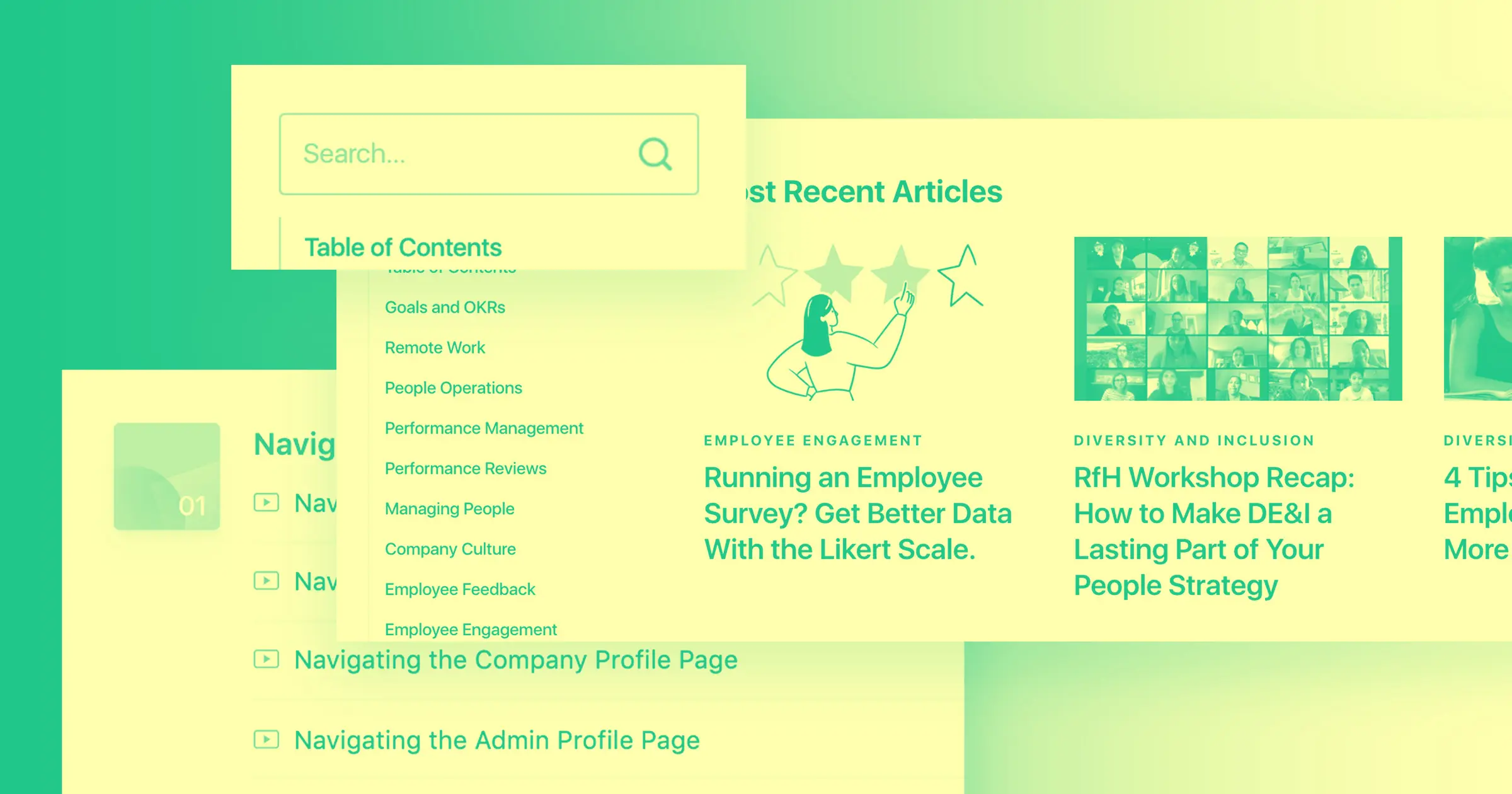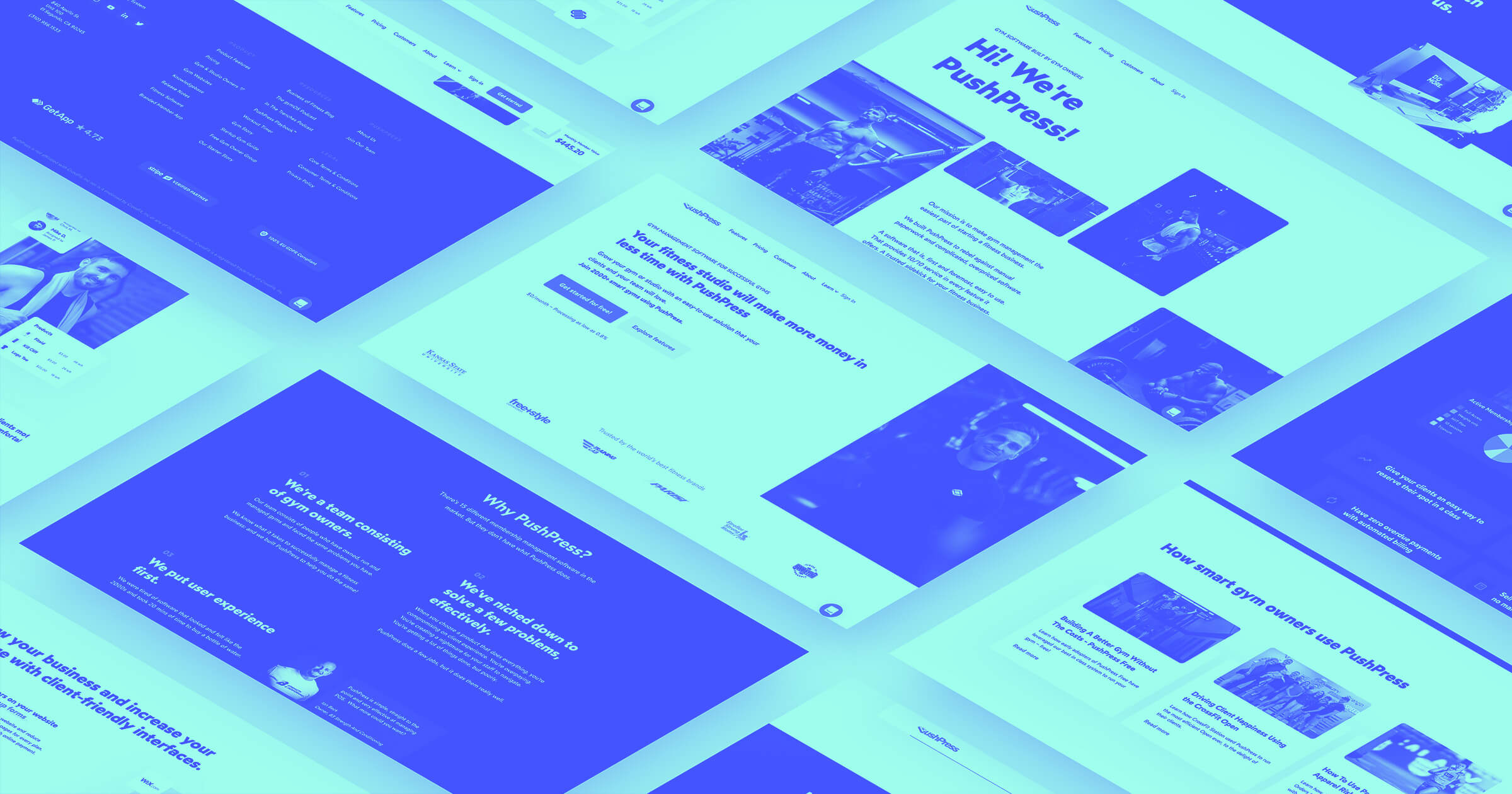Website development is a common blocker for marketing teams. But it doesn’t have to be.
Marketers dream about awesome campaigns, but when it comes to actually bringing those campaigns to life they are typically brought back down to reality. The engineering team is too focused on building the core product and external agencies are too expensive.
It’s a familiar story at companies around the world that marketers struggle to get engineering resources. Unfortunately, marketers get too accustomed with this reality. Instead of thinking big and building campaigns that they know are amazing, marketers limit their ideas based on their access to engineering resources.
Webflow changes the game for marketers, eliminates the common engineering challenge, and turns dreams into reality.
The Webflow workflow
Over the past two years, we’ve used Webflow at Lattice and it’s elevated our marketing program.
Prior to Webflow, we worked with a freelance developer to get our marketing website built. The process was typical of most development processes — wires/design in Sketch or Figma and then code the site (Github, DatoCMS, etc.). It was an okay process, but we would frequently miss launch deadlines and have to wait days for small changes on the website.
Now, we don’t have any developers working on the marketing team. We just have our internal design team (two full-time employees) designing and building our website. In this new world, we go straight from Figma to Webflow. We limit any miscommunication because the same person who designs gets to build, so we’re able to move at a much faster pace.
Importantly, the marketers on the team also have access to Webflow which empowers the team to create and make changes as needed. We have two marketers who are actually able to build pages and work in the Designer. But then we also have 12 other marketers who use the Editor to update CMS items and make small changes across the site.
No longer do we need to wait for a developer to add a field to a CMS, fix a typo or redesign a landing page. We’re able to make changes in the moment, and this allows us to not get bogged down with endless ticket requests and keep our marketing process fairly decentralized. We’re also saving a bunch of money by not having a full-time developer on staff or using an agency to update our website.



















Webflow Enterprise
Trusted by over 300,000 of the world’s leading brands, Webflow Enterprise empowers your team to visually build, manage, and optimize sophisticated web experiences at scale — all backed by enterprise-grade security.
Webflow turns dreams into reality
While building Lattice, we’ve had a bunch of ideas around how to improve everything from our marketing program to our customer experience. With Webflow, we’re able to make these ideas come alive.
Here are a few examples featuring what we’ve been able to do with Webflow:
Build a media site
A core philosophy behind our marketing program is that we operate like a media company. We create tons of content ranging from articles to videos to podcasts and create opportunities for our customers to network online and offline. The team is constantly creating content, so we needed a robust CMS and website experience to showcase the team’s work.
With Webflow, we were able to easily revamp our Library and created a community space in a couple weeks of focused work. This was all done through the work of our internal teams.
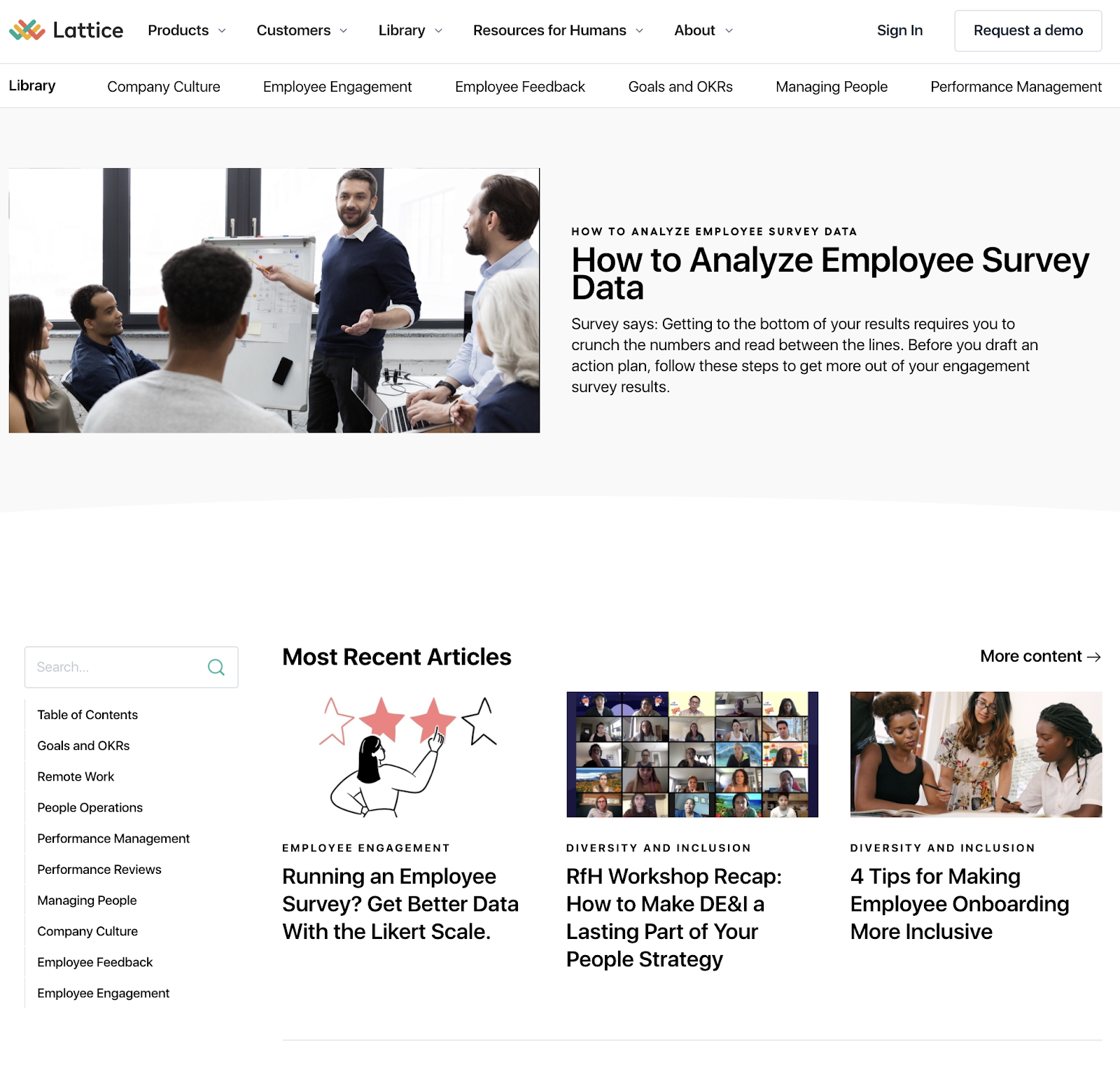
Teach customers how to use the product
The customer success team came to the marketing team with a challenge around how to scale customer education. We didn’t have enough CX members on staff to support every single implementation and question, so we needed a way to create for customers to self serve and find valuable information.
The end result of this project is Lattice University, which features 167 video lessons across three different personas.
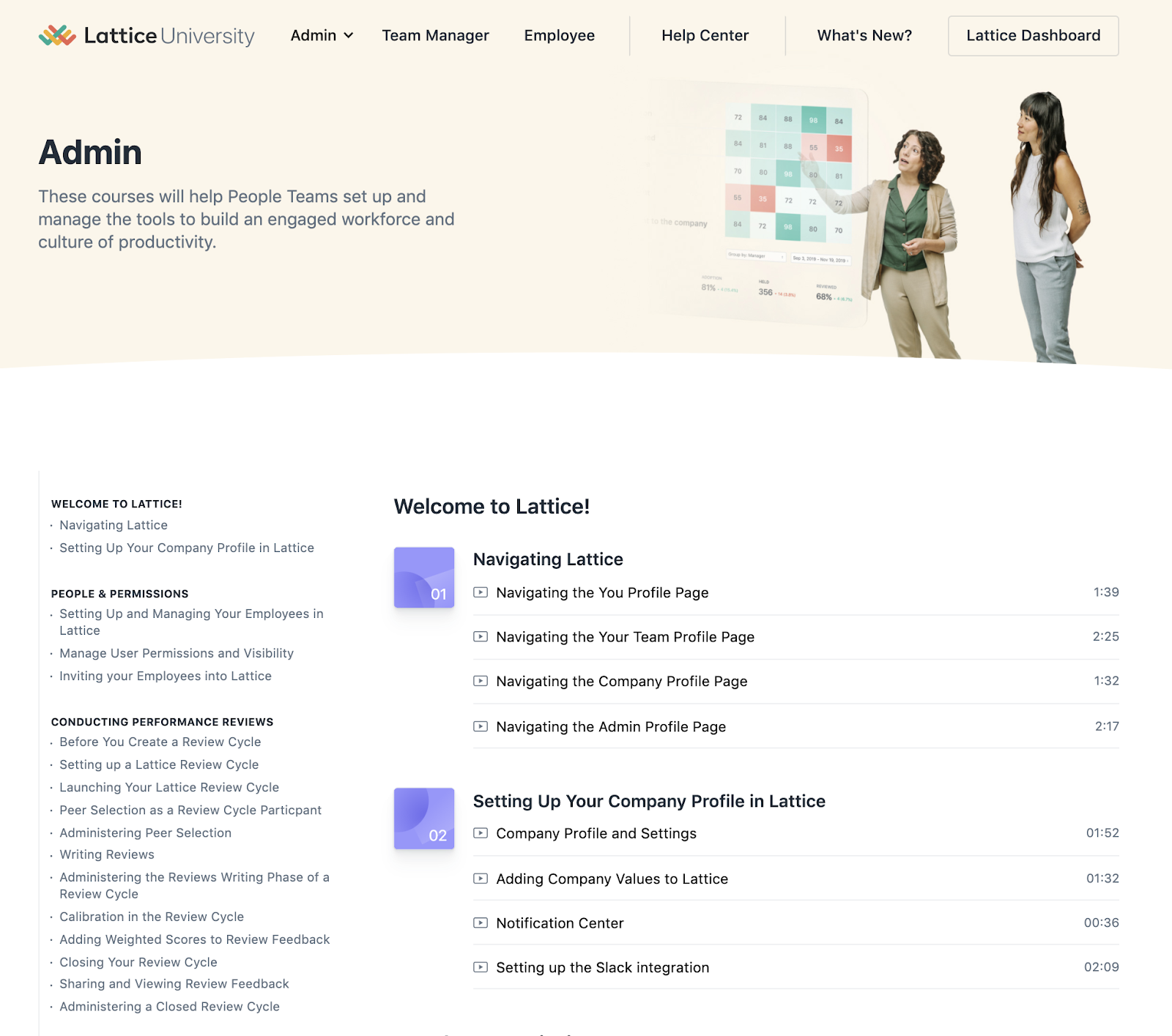
Help customers with implementation
Over the years, Lattice has moved up-market and has started to serve bigger customers. As you start to serve more enterprise customers, change management becomes a bigger challenge. We needed to find a way to empower our admins to teach the rest of the company about Lattice.
We came up with this idea to create a Change Management Hub that would provide a series of custom decks, intro emails and custom collateral that would help with the Lattice implementation.
With a couple weeks of work, a marketer (who doesn’t know how to code) was able to bring this Change Management Hub to life.
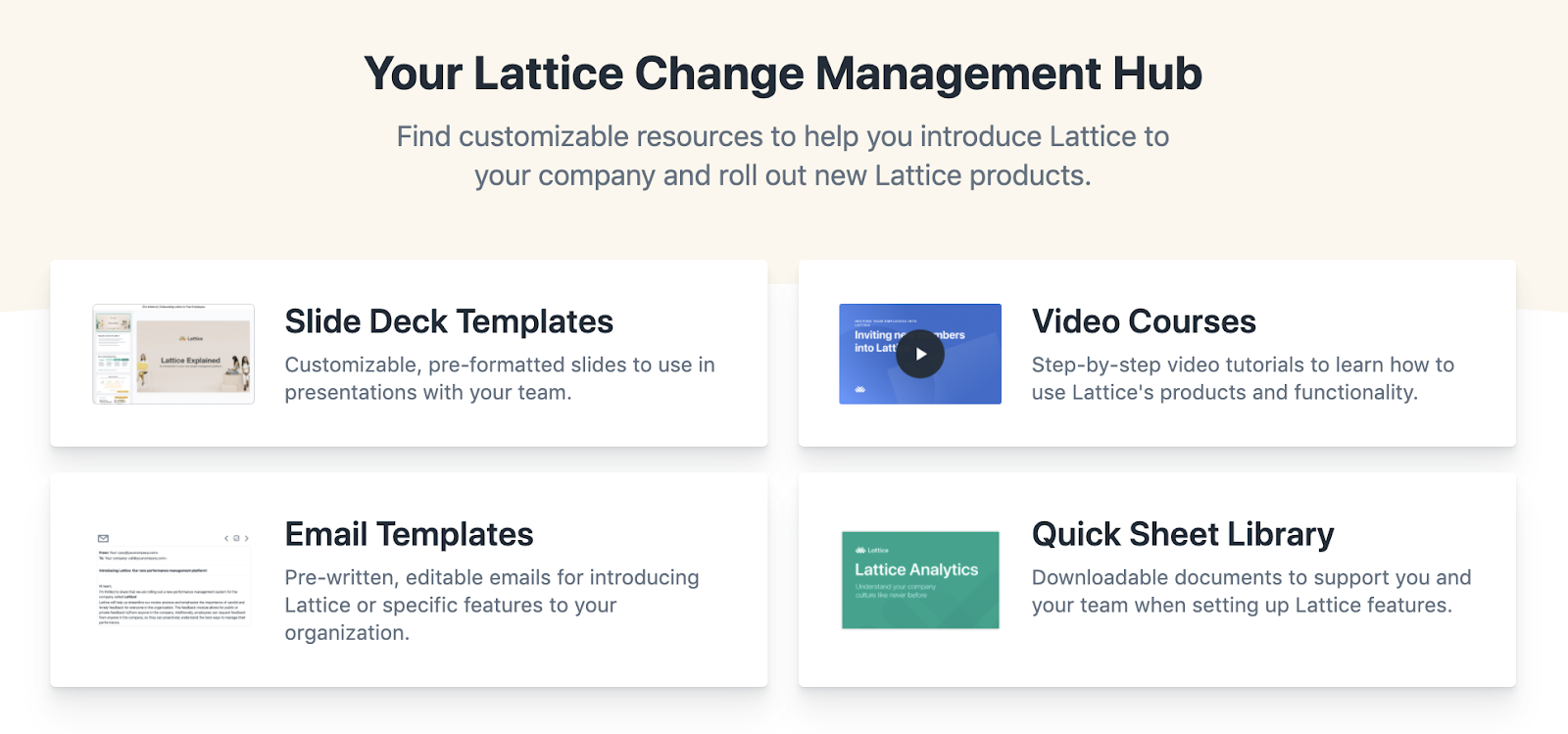
Support account executives with complex sales deals
As part of our move up-market, we’ve thought critically about how to better support our enterprise sales team navigate complex deal cycles. One crazy idea we had was to create a partner portal. A single place where a prospect can view information about the product they are interested in buying.
With Webflow, we were able to turn this dream into reality. We created a dynamic experience using Tabs+CMS inputs and developed a way for our sales team to share custom content related to their deal cycle. You’ll see in the screenshots below that we can now share everything from conversation notes, to pitch decks to pricing all through this partner portal. We even have a “sign in” page that notifies a sales rep when someone looks at the portal.

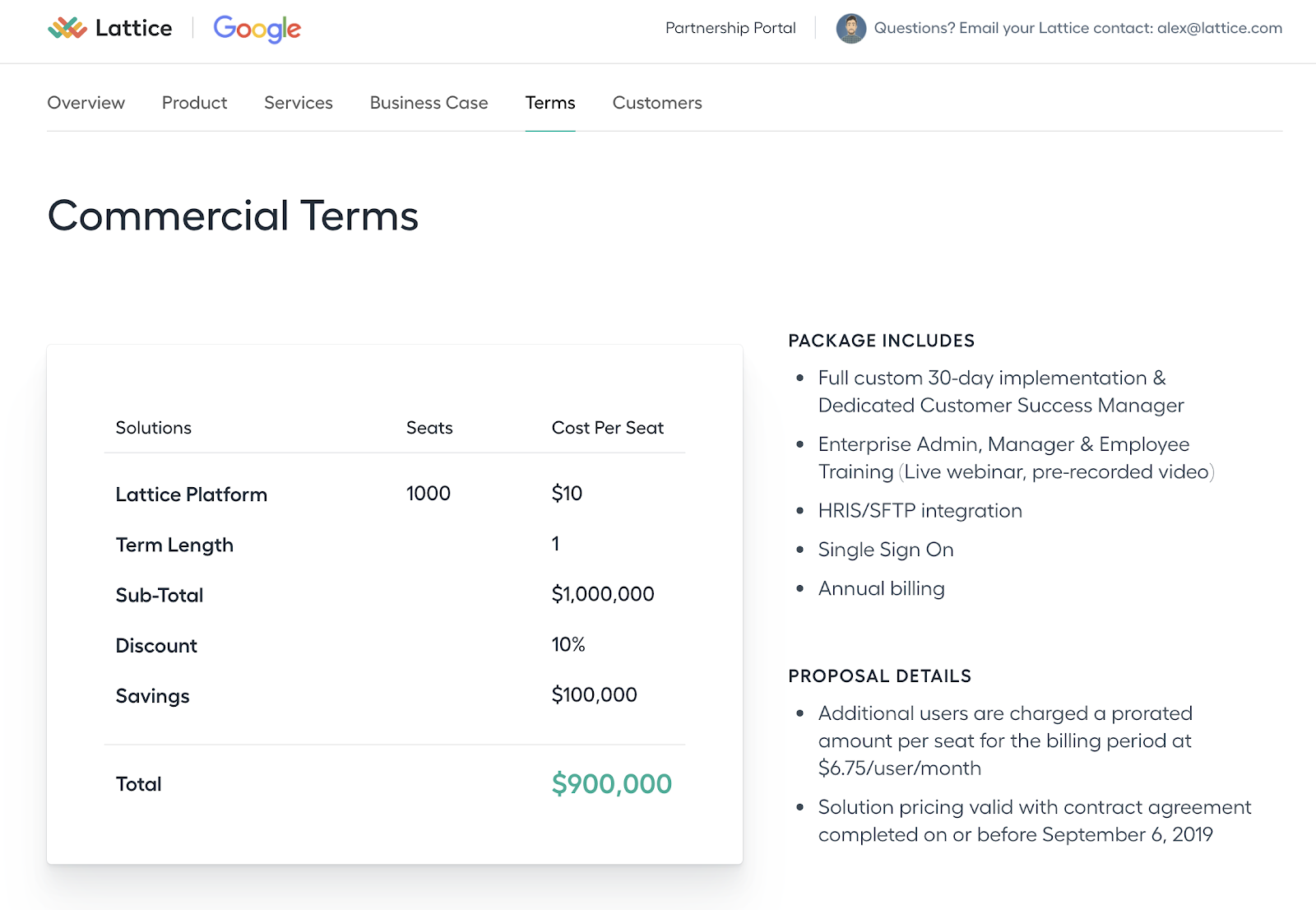
UPDATE: This partner portal inspired me to leave Lattice and start a new company, Dock. Webflow literally made my dreams of starting a company a reality.
Webflow gives marketers super powers
In the end, Webflow is an incredible platform that has really leveled up Lattice’s marketing. Here’s a summarized view of how Webflow helps marketing programs:
- Save money
- Move faster and run more campaigns/programs
- Empower marketers to be creative
- Turn dreams into reality
- Support our customers across the customer lifecycle
- Provide tools to internal teams
- Differentiate from the competition
We use Webflow across each stage of the customer lifecycle, and our customer experience has drastically improved whether it’s your first time hearing about Lattice or if you’re a long time customer.

Of course, everything featured in this post is only made possible by the talented Lattice team who work with Webflow everyday. Shout out to Luc, Damien and Derek.


